Nutr 466-leadership 3.2 career planning
1/44
There's no tags or description
Looks like no tags are added yet.
Name | Mastery | Learn | Test | Matching | Spaced |
|---|
No study sessions yet.
45 Terms
Self-assessment
Before you can plan your career, it's essential to understand yourself better. Self-assessment helps you identify your strengths, weaknesses, opportunities, and threats. Tools like SWOT analysis, personality tests, and skills inventories can provide valuable insights into your personal and professional attributes.
A SWOT analysis is a strategic planning tool that helps people identify their strengths, weaknesses, opportunities, and threats in their career. It can help people make better decisions about their career development.
What does SWOT stand for?
•S: Strengths, or your core competencies, skills, and talents
•W: Weaknesses, or areas where you could improve
•O: Opportunities, or needs you can fill
T: Threats, or external changes that could impact your career- AI, changes in accreditation
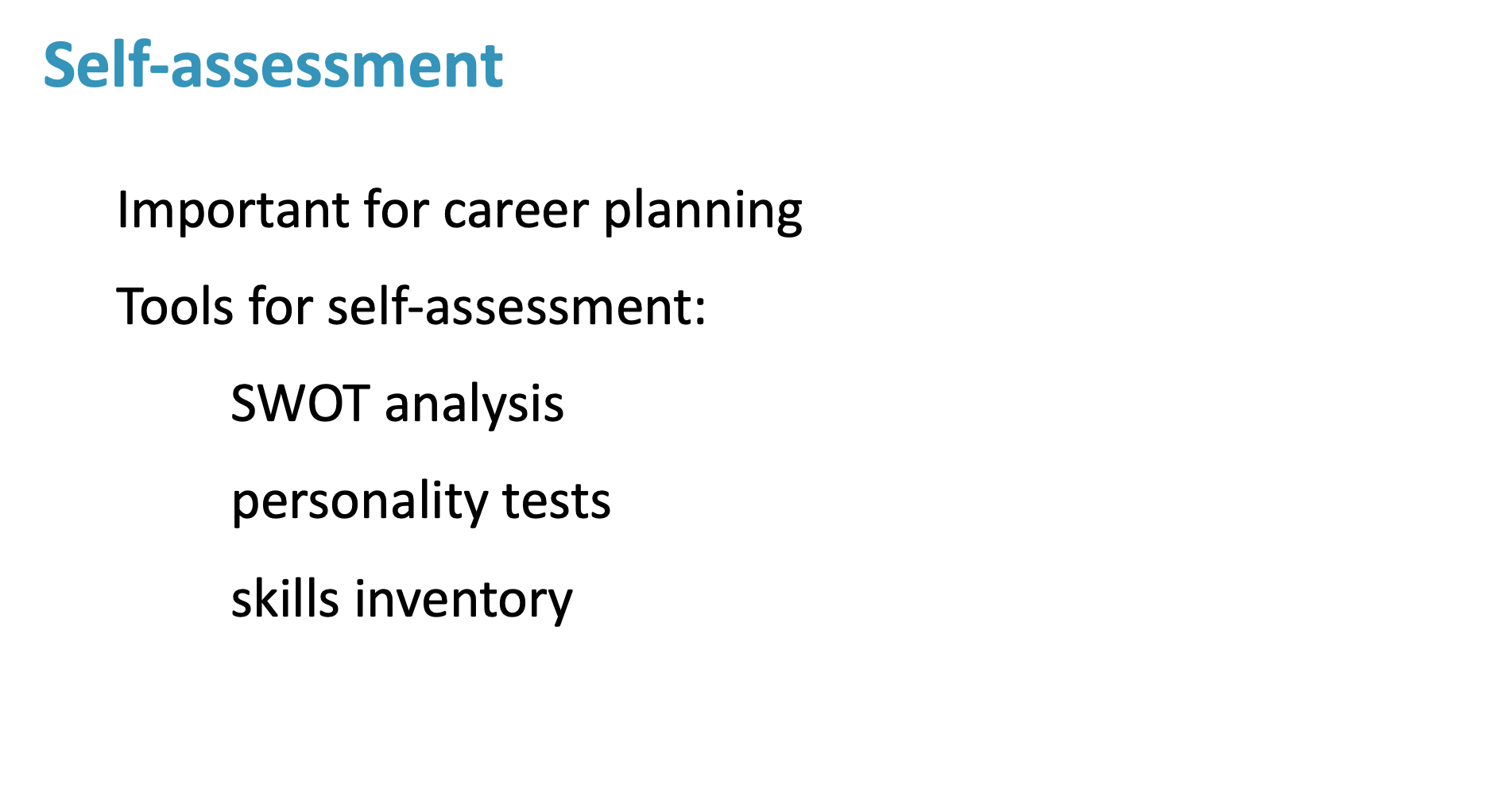
How can a SWOT analysis help with career planning?
SWOT analysis help with career planning?
Identify strengths
Consider your education, certifications, and work experience. Think about what makes you unique, such as your soft skills or technical proficiencies.
Identify weaknesses
Be honest with yourself about areas you could improve. Consider what tasks you've enjoyed in the past and what skills you used to complete them.
Identify opportunities
Consider external factors, such as industry trends, new technology, or unfulfilled needs in your organization.
Identify threats
Consider external changes that could impact your career.
Make a plan
Use the information from your SWOT analysis to create a personalized career development plan.
when considering your strengths, ask yourself what unique selling points you possess, what you are good at, what others praise you for, and what awards or achievements you have. As for weaknesses, consider your areas of improvement, what you are not good at, what others criticize you for, and the challenges or obstacles you face. Opportunities involve looking at trends and changes in your industry or field, gaps or needs that you can fill or meet, new or emerging markets or niches that can be explored, and resources or support that can be accessed or leveraged. Lastly, consider the threats such as risks or challenges that you face or anticipate, barriers or limitations that you encounter or expect, competitors or substitutes that may arise, and negative or unfavorable factors that could present themselves.
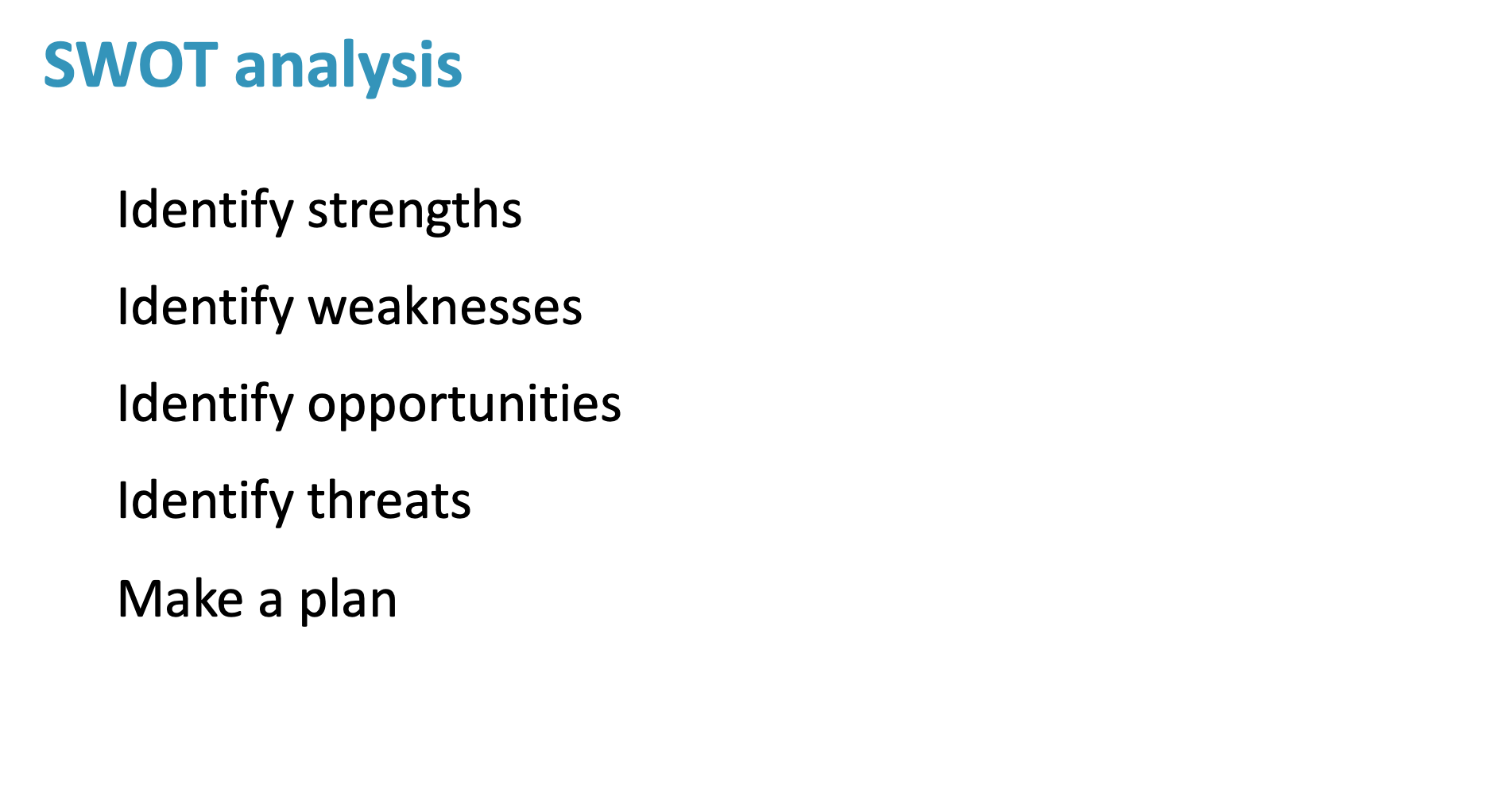
Setting career goals
Setting clear career goals is a critical step in your career planning process. Using the SMART criteria—Specific, Measurable, Achievable, Relevant, and Time-bound—can help you create effective goals. For example, a short-term goal might be to complete a dietetic internship, while a long-term goal could be to become a certified specialist in sports dietetics.

Explore career options
oThe field of dietetics offers a wide range of career paths. You can work in clinical nutrition, community nutrition, public health, food service management, research, or even specialize in areas like sports nutrition or pediatric nutrition. To explore these options further, consider joining professional associations, browsing job boards, and conducting informational interviews with professionals in your areas of interest."

Clinical dietitian
Work Settings:
Responsibilities:
Skills Required:
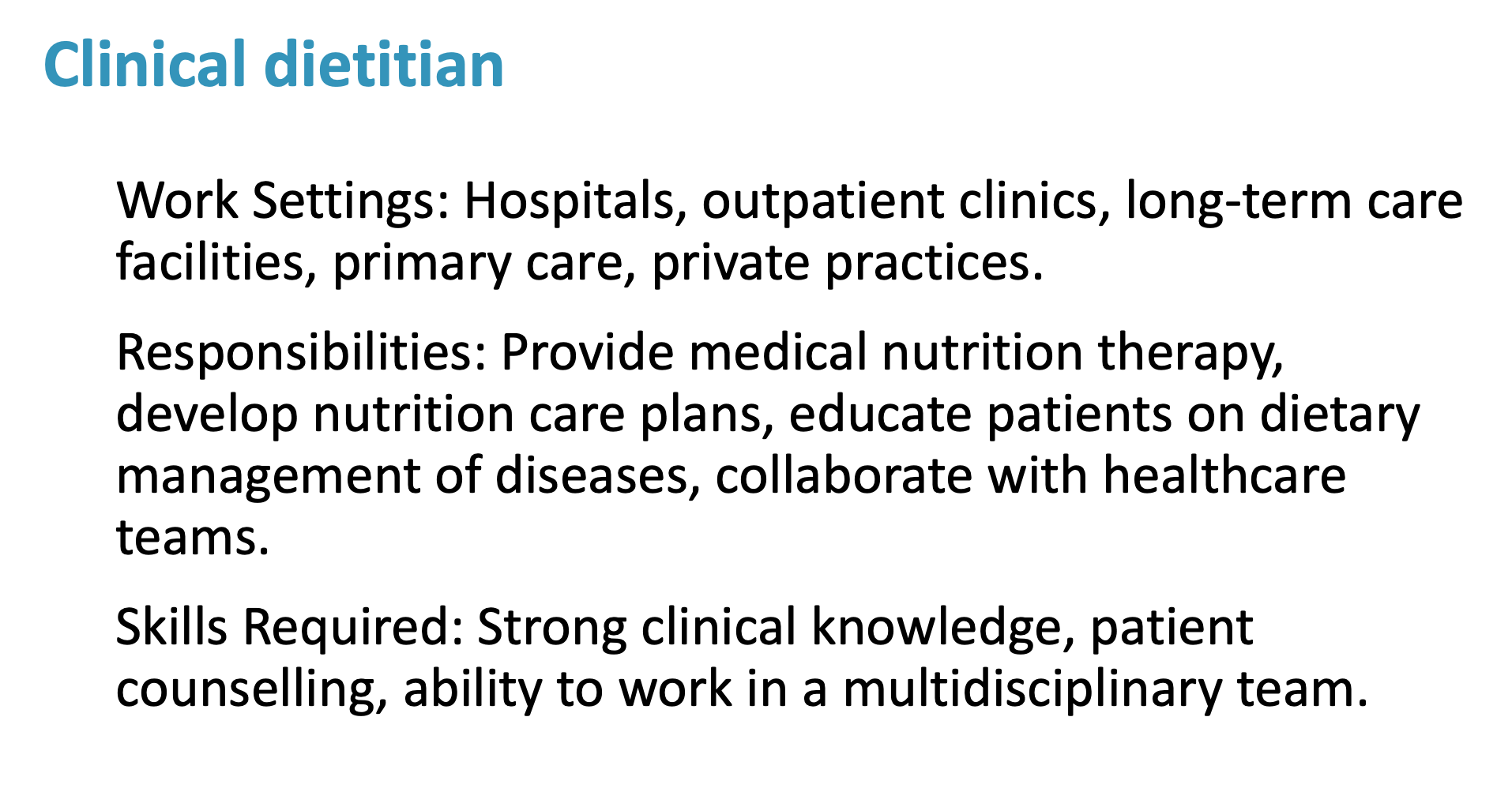
Community dietitian
Work Settings:
Responsibilities:
Skills Required:
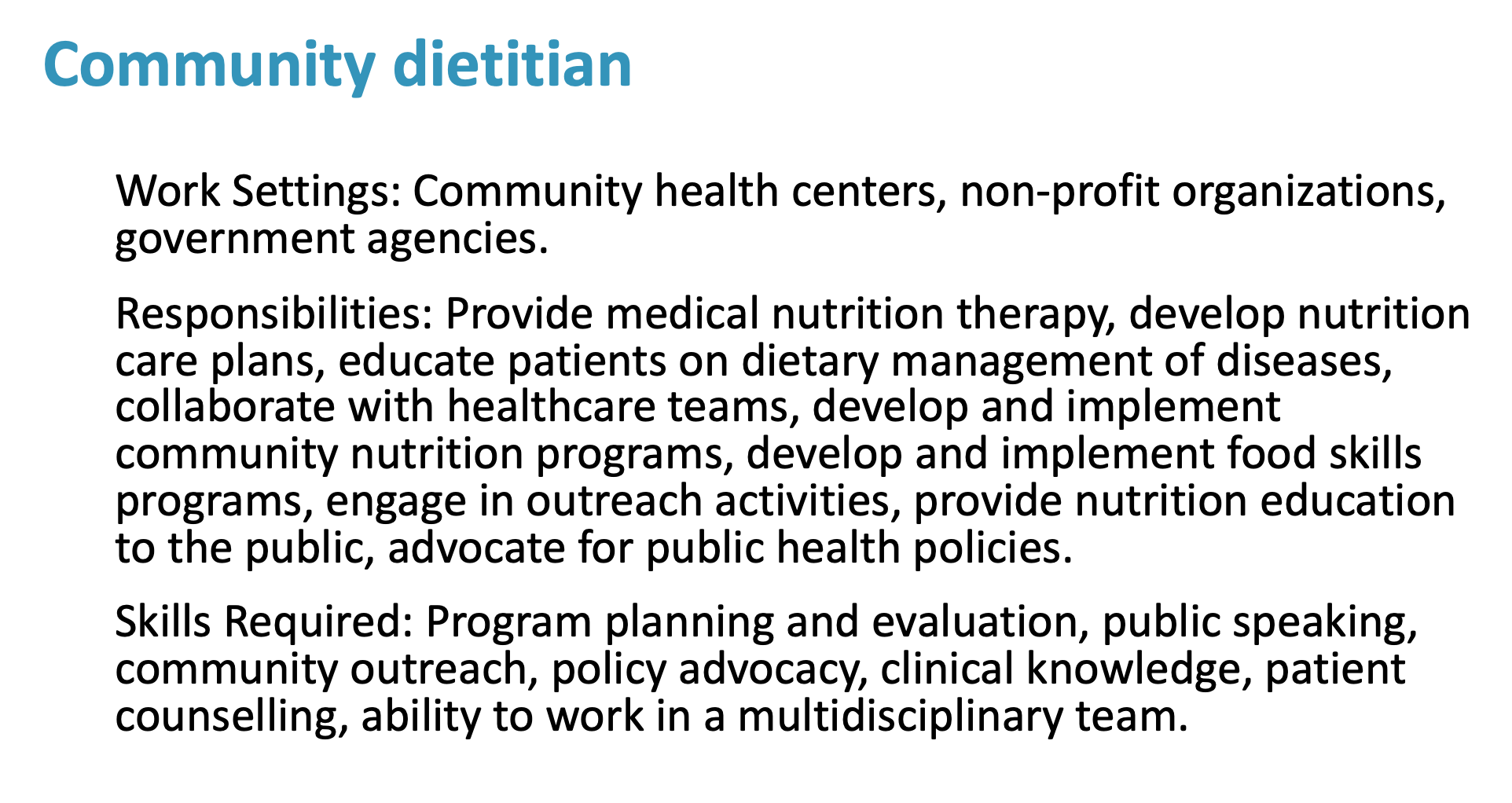
Public Health dietitian
Work Settings:
Responsibilities:
Skills Required:
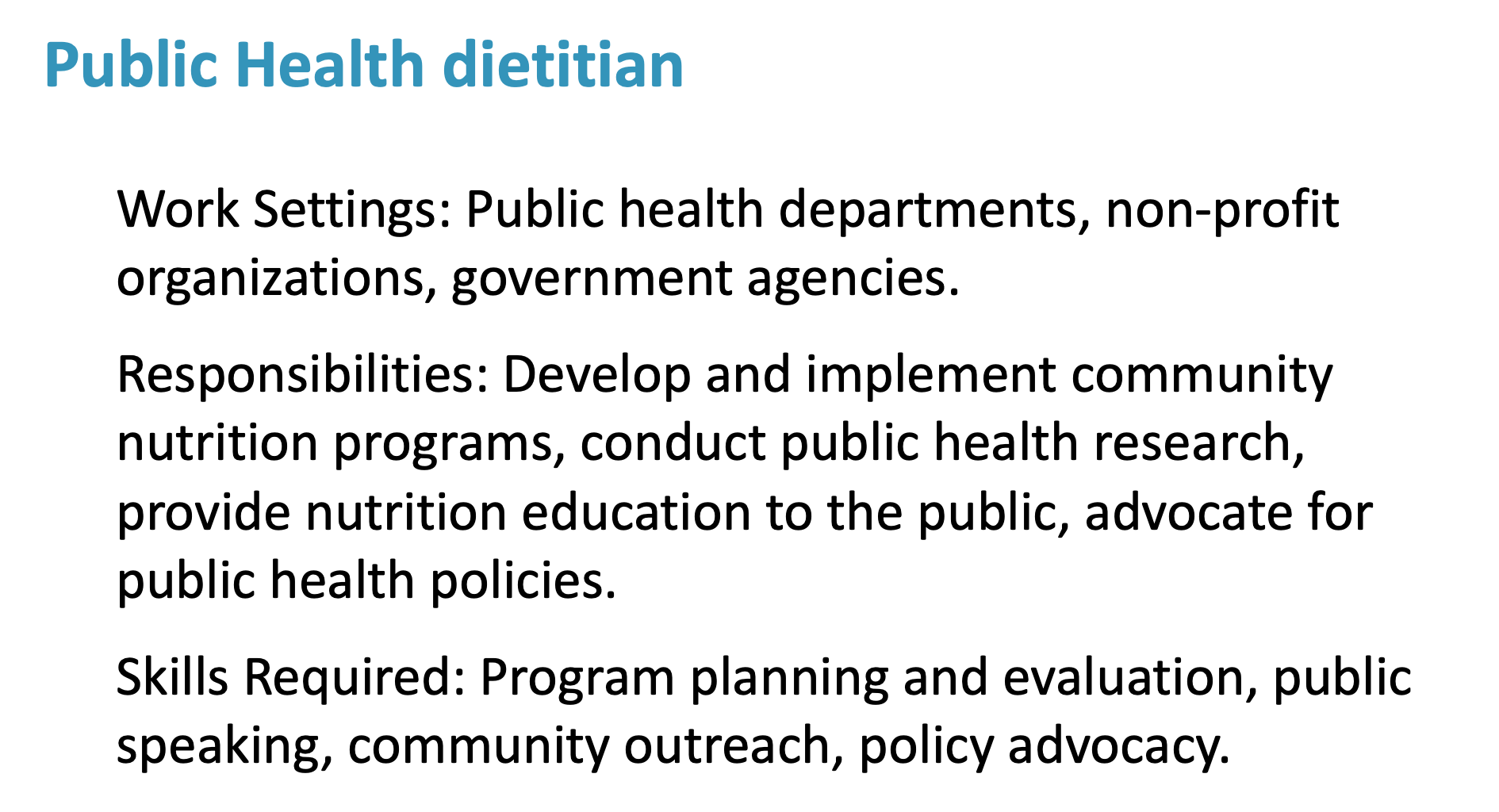
Sports dietitian/nutritionist
Work Settings:
Responsibilities:
Skills Required:
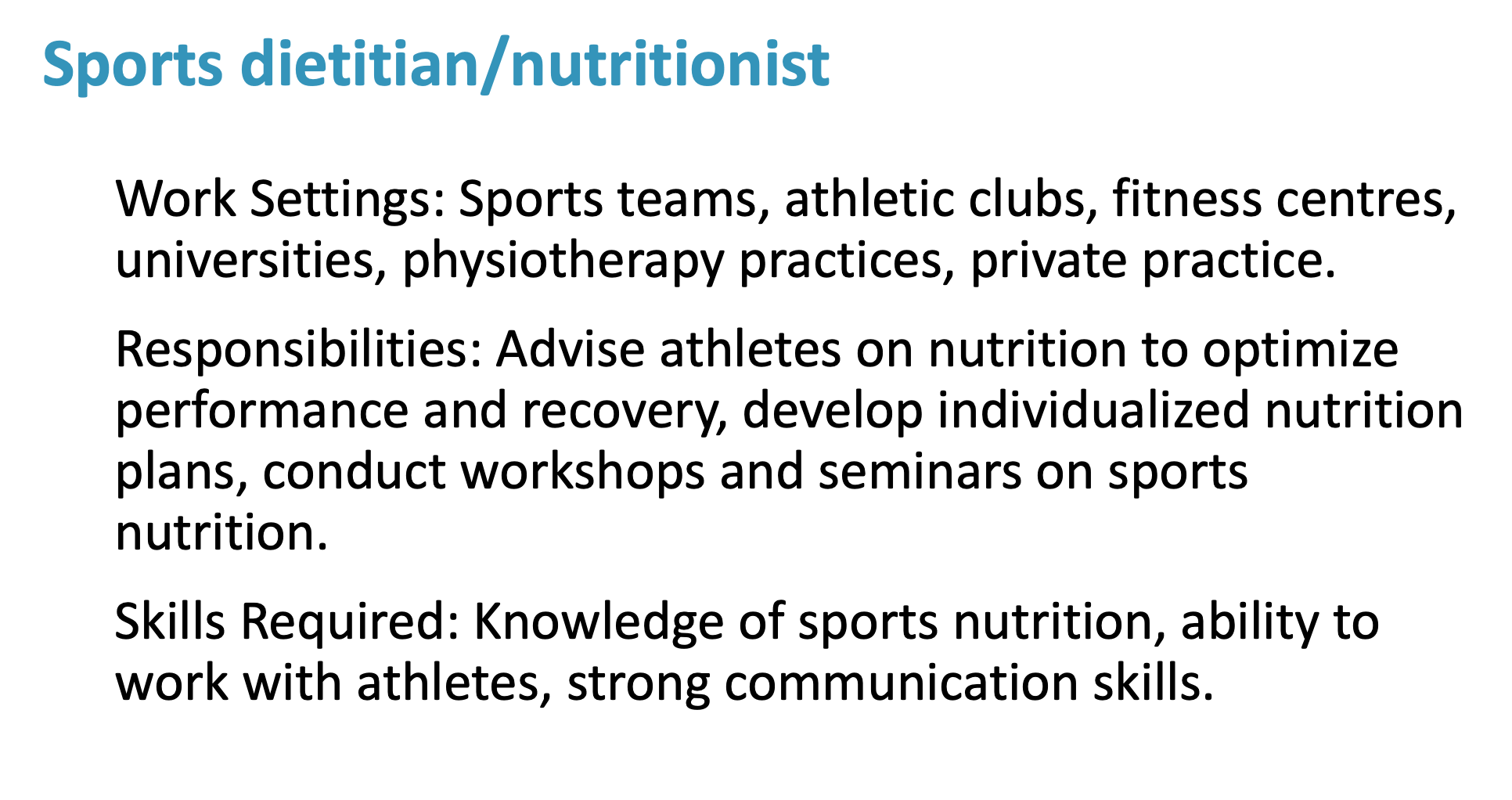
Food industry dietitian
Work Settings:
Responsibilities:
Skills Required:
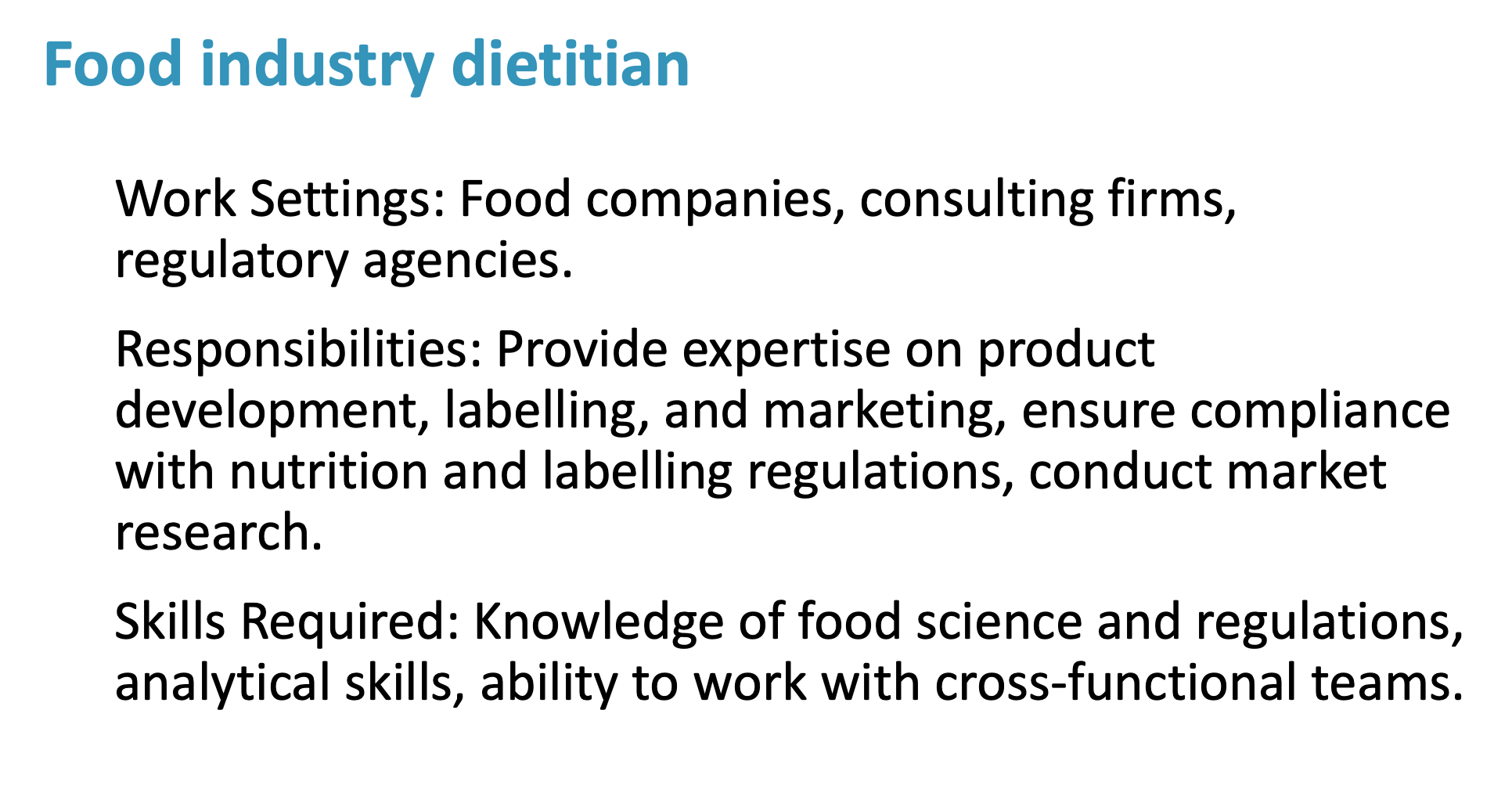
Researcher
Work Settings:
Responsibilities:
Skills Required:
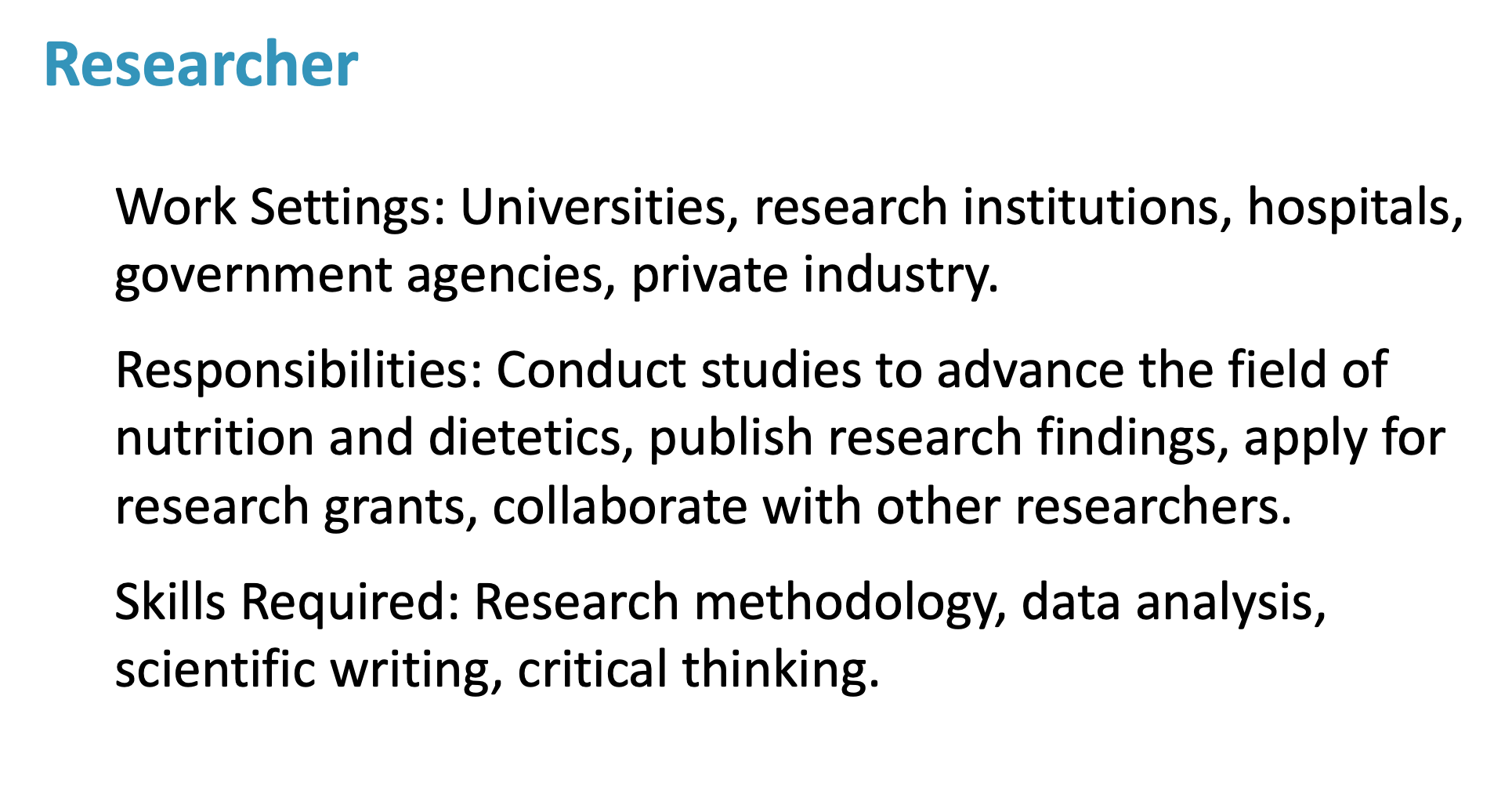
Research scientist
Work Settings:
Responsibilities:
Skills Required:
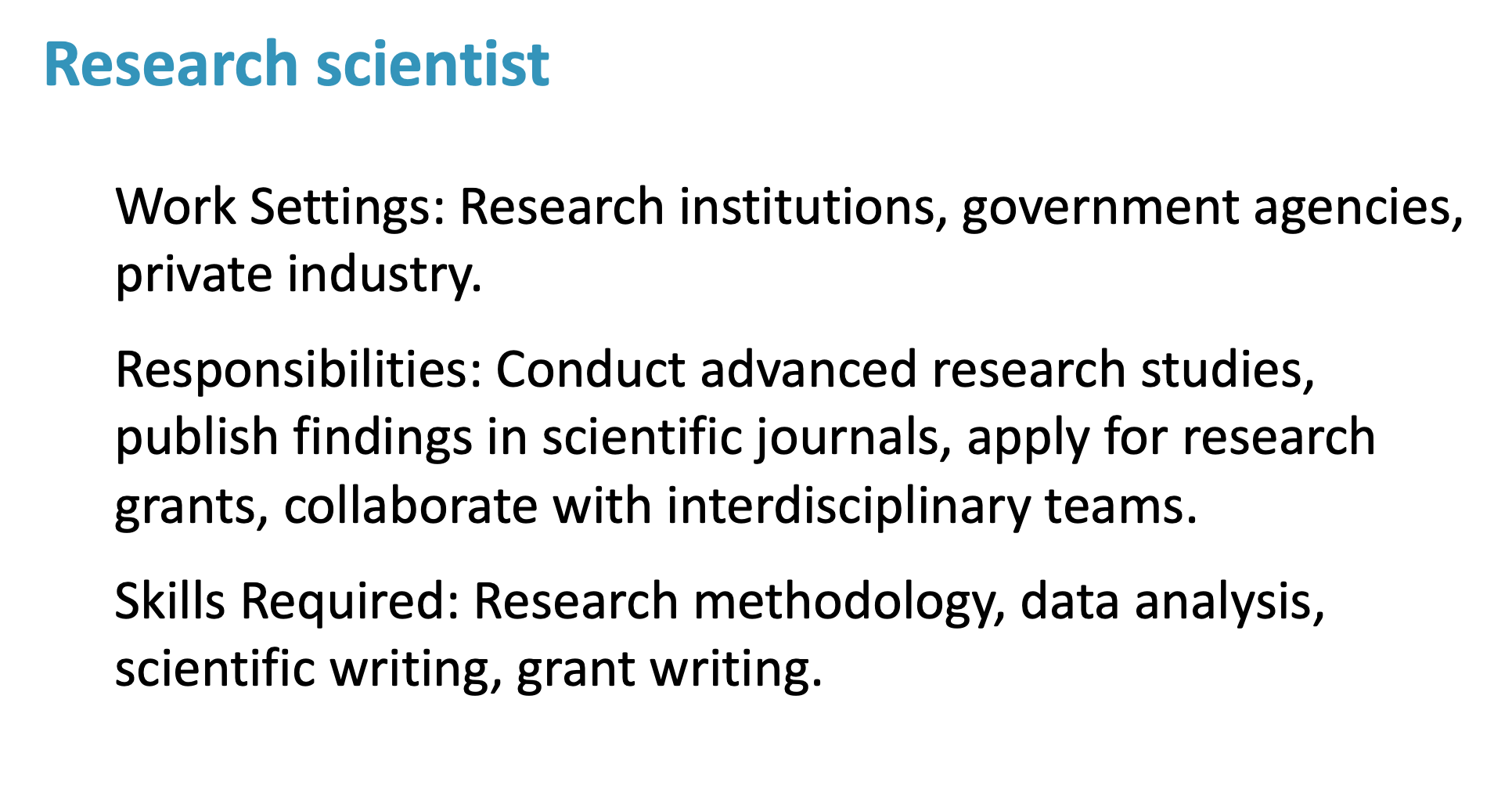
Nutrition educator/counsellor'
Work Settings:
Responsibilities:
Skills Required:
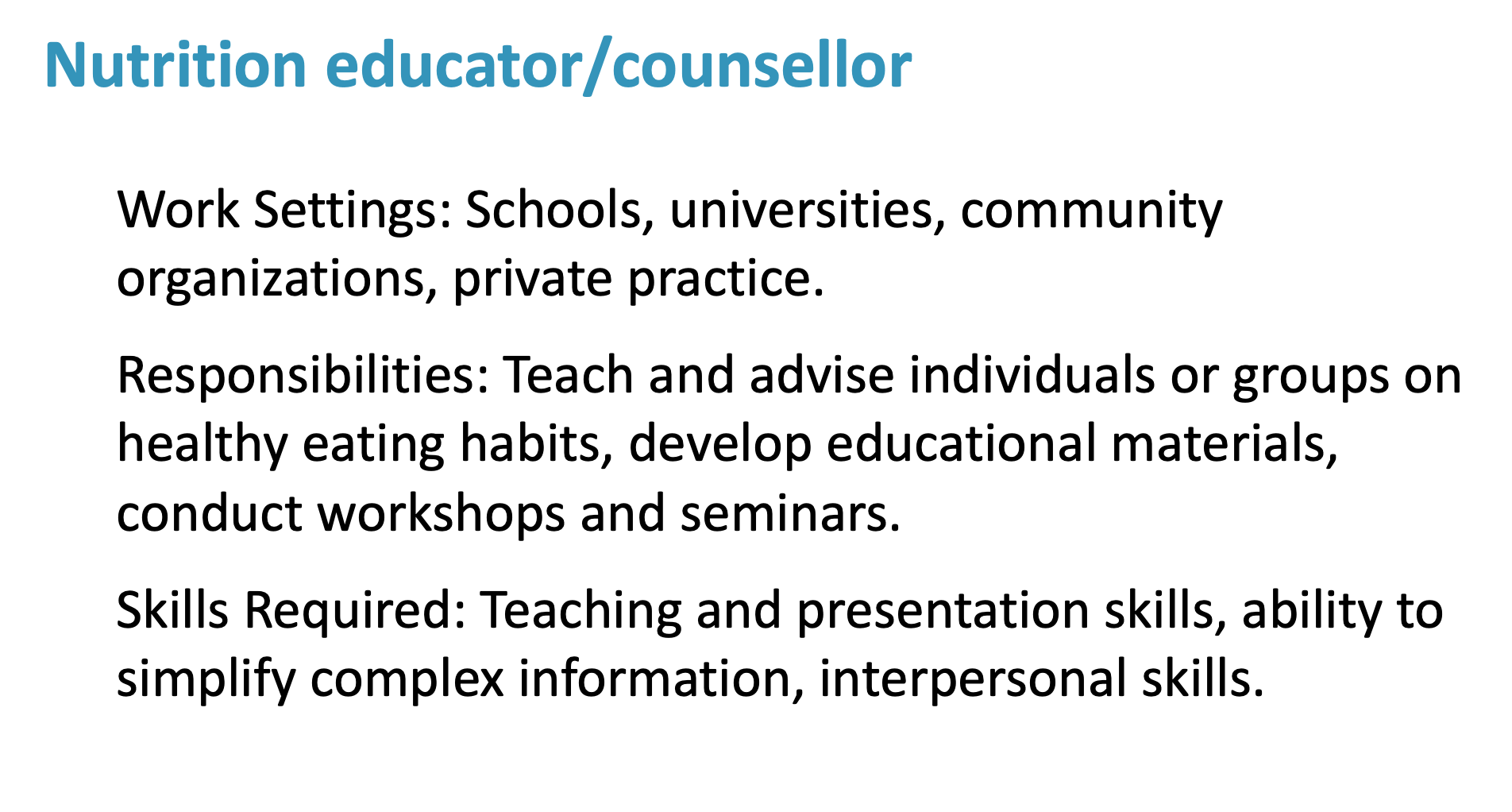
Entrepreneur
Work Settings:
Responsibilities:
Skills Required:
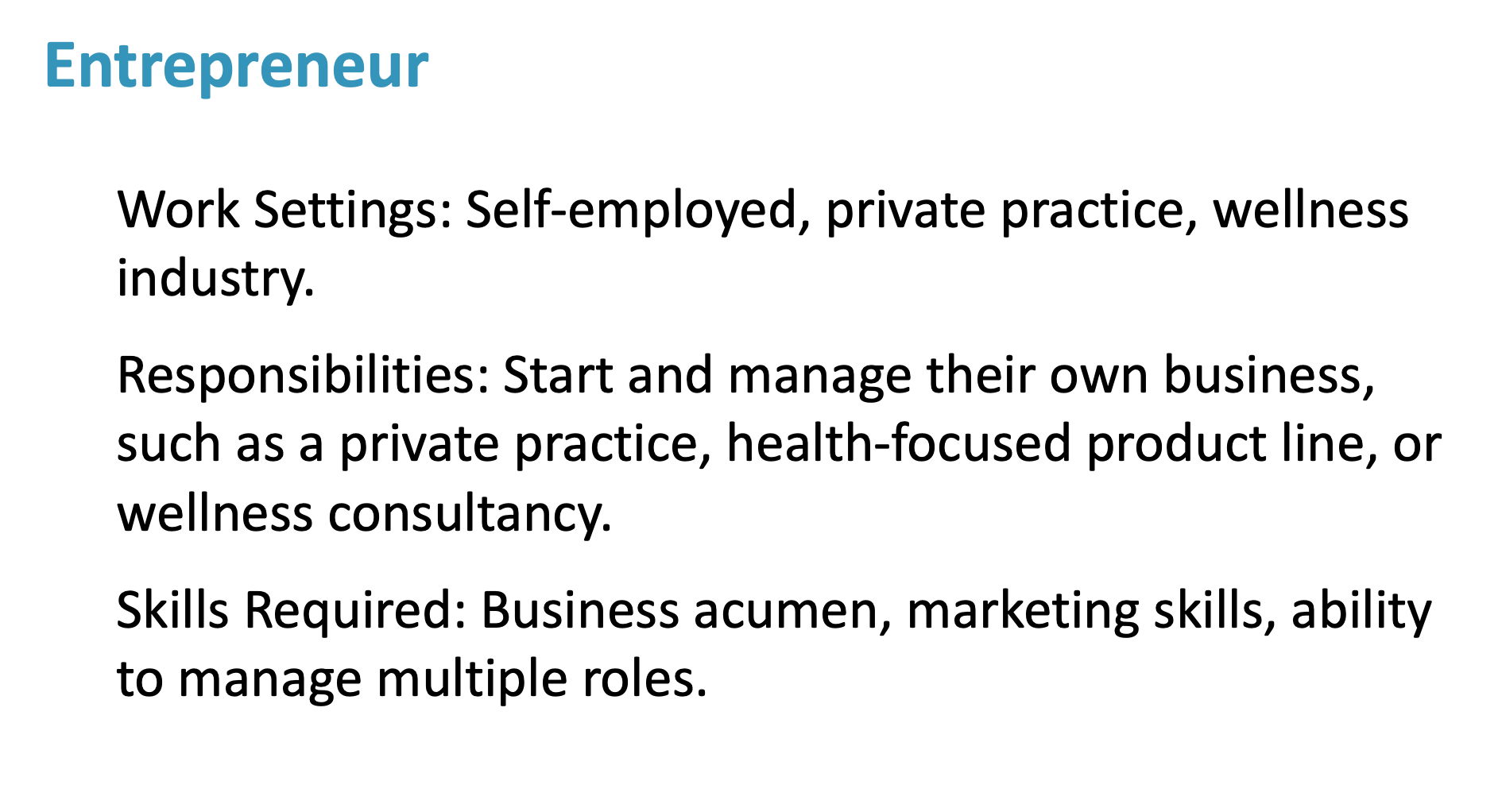
Corporate wellness
Work Settings:
Responsibilities:
Skills Required:
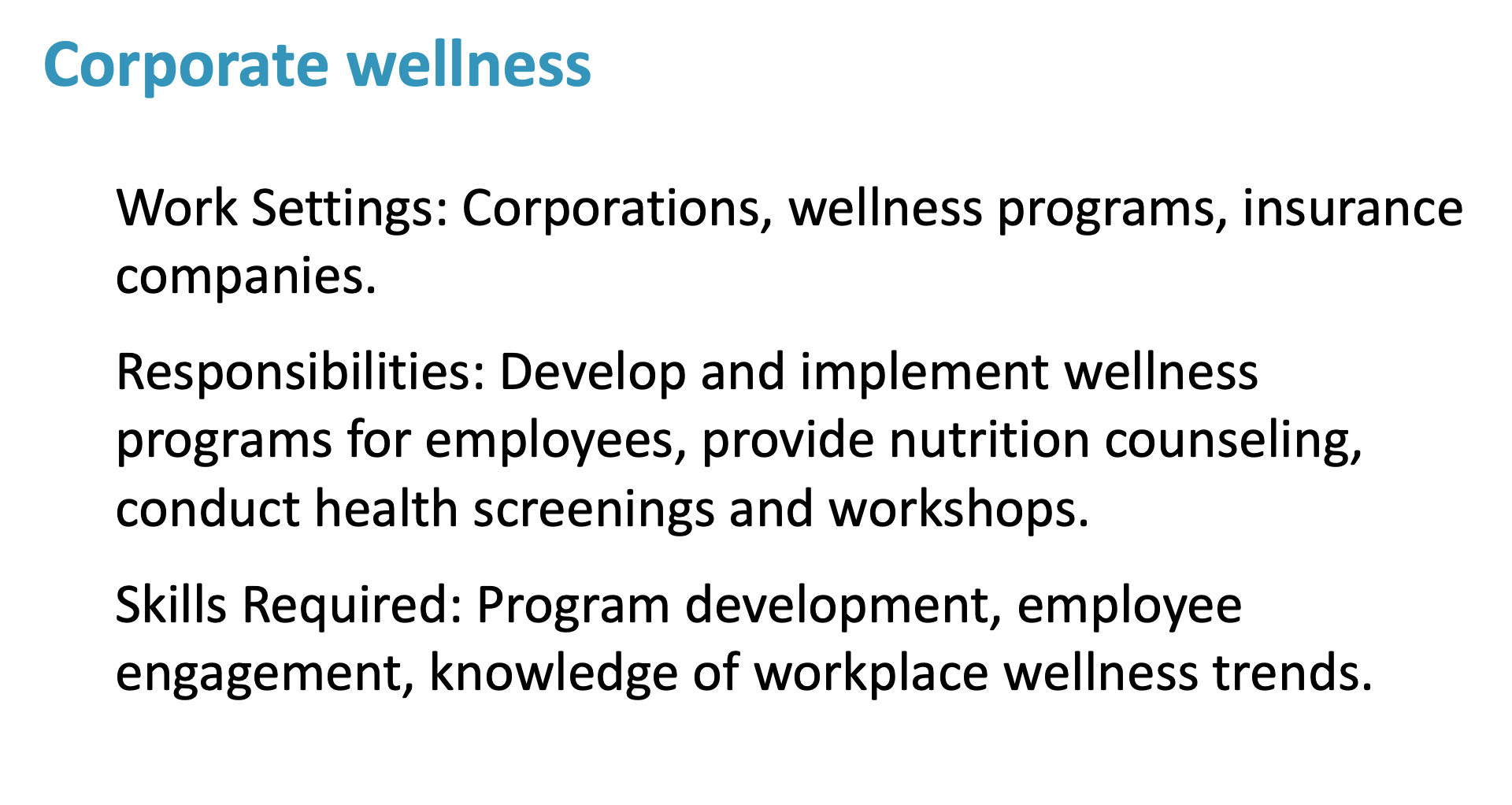
Telehealth dietitian
Work Settings:
Responsibilities:
Skills Required:
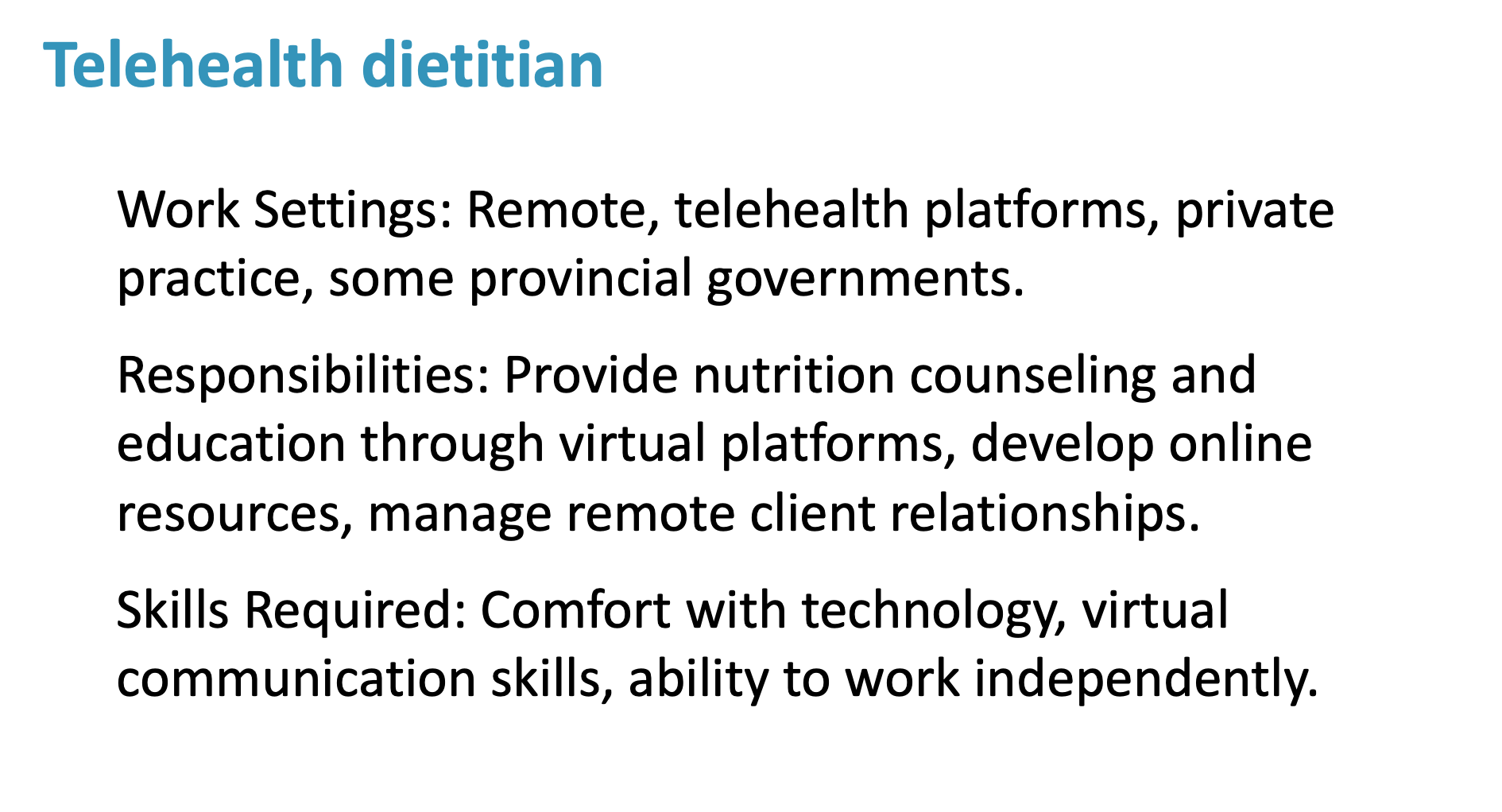
Policy advisor
Work Settings:
Responsibilities:
Skills Required:
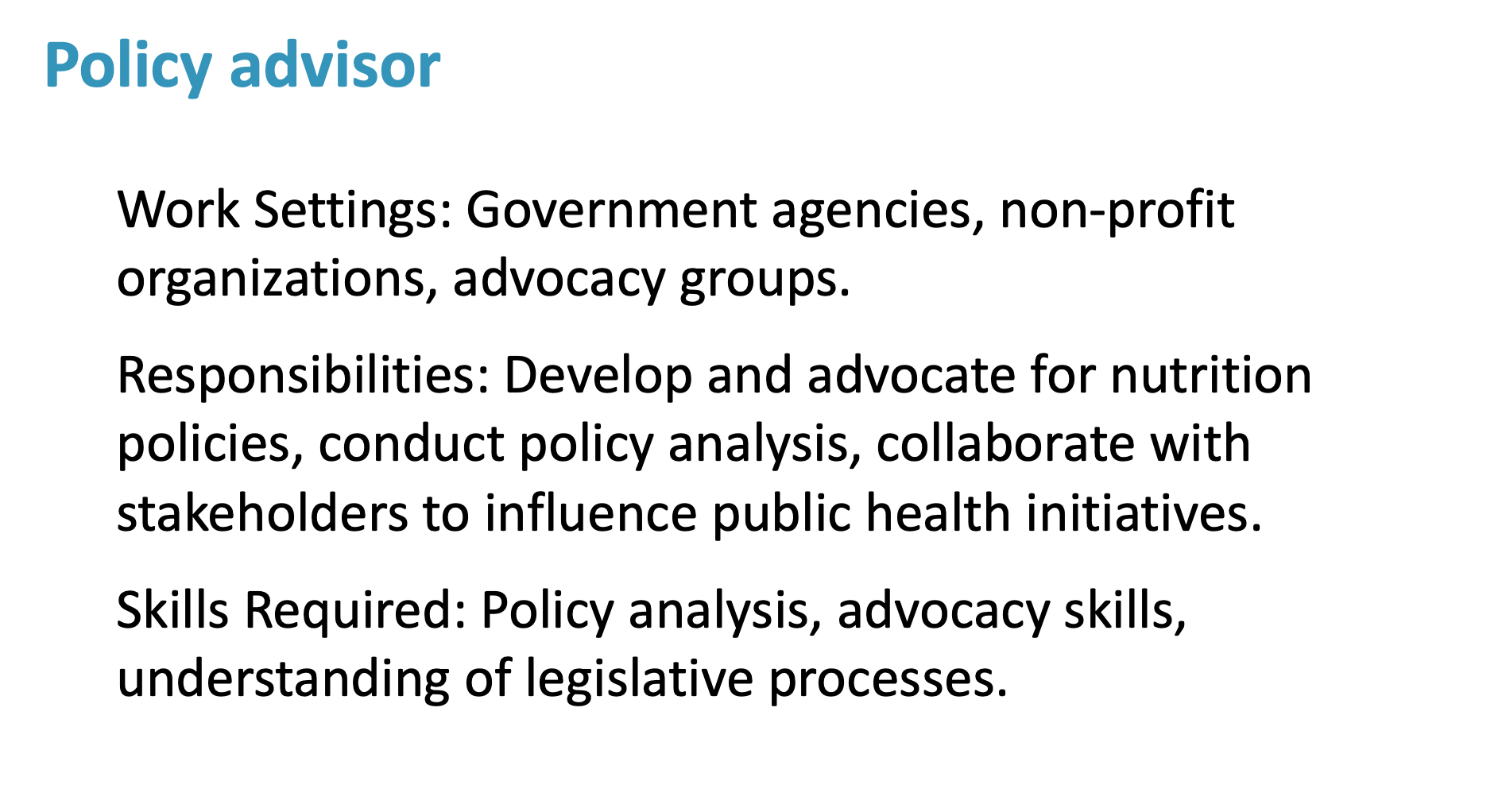
Media dietitian
Work Settings:
Responsibilities:
Skills Required:
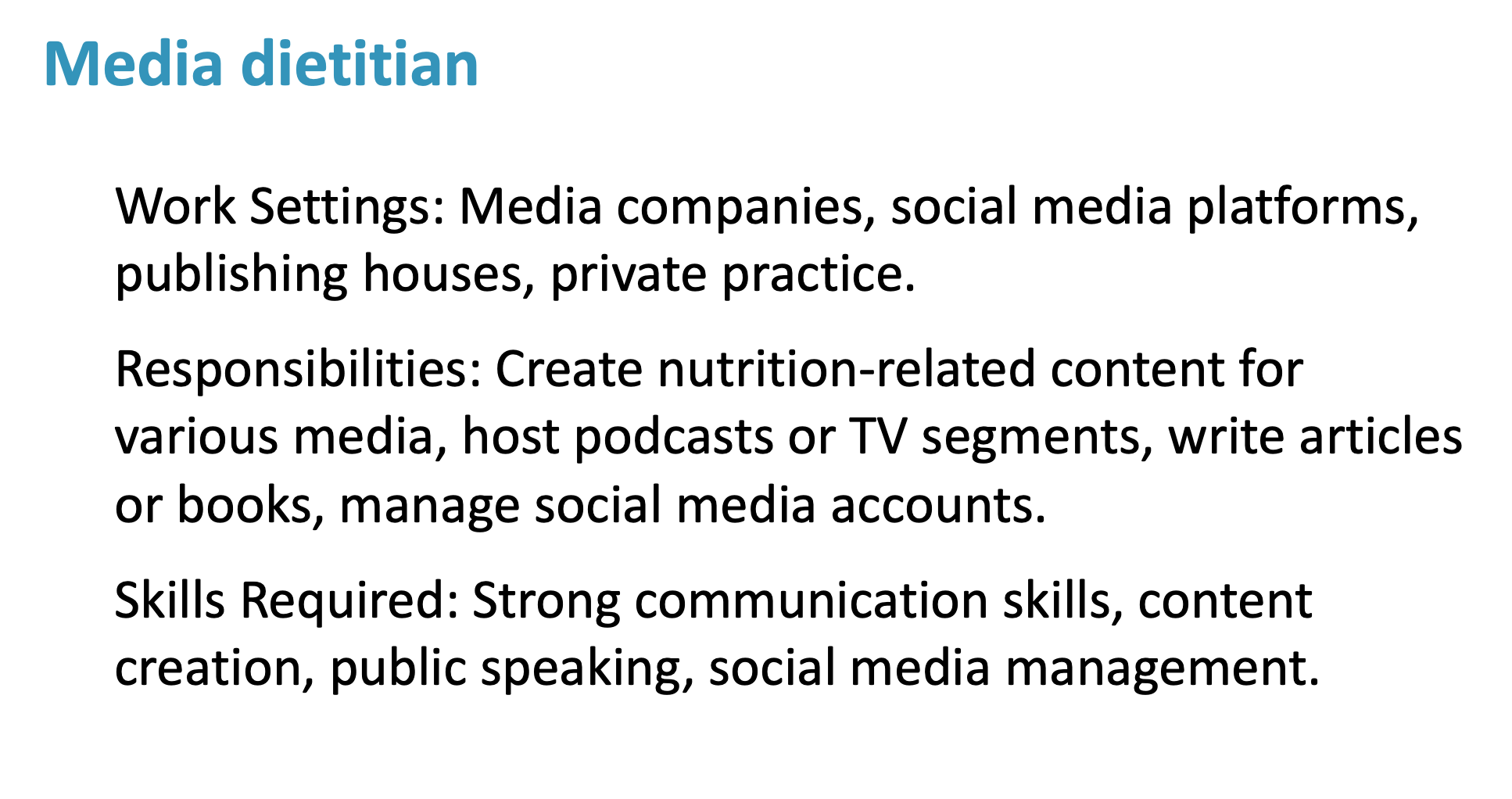
Culinary dietitian
Work Settings:
Responsibilities:
Skills Required:
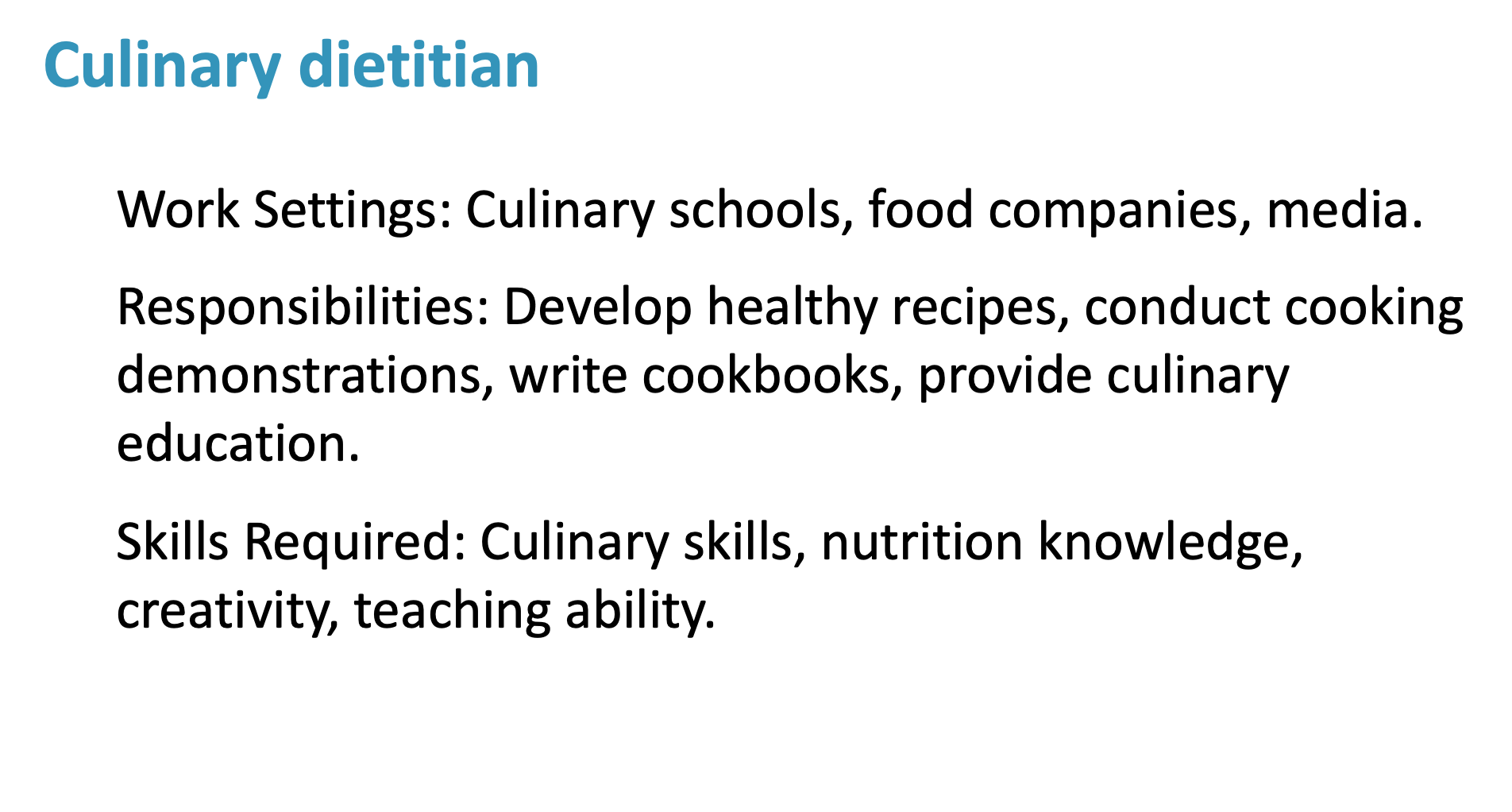
Foodservice management
Work Settings:
Responsibilities:
Skills Required:
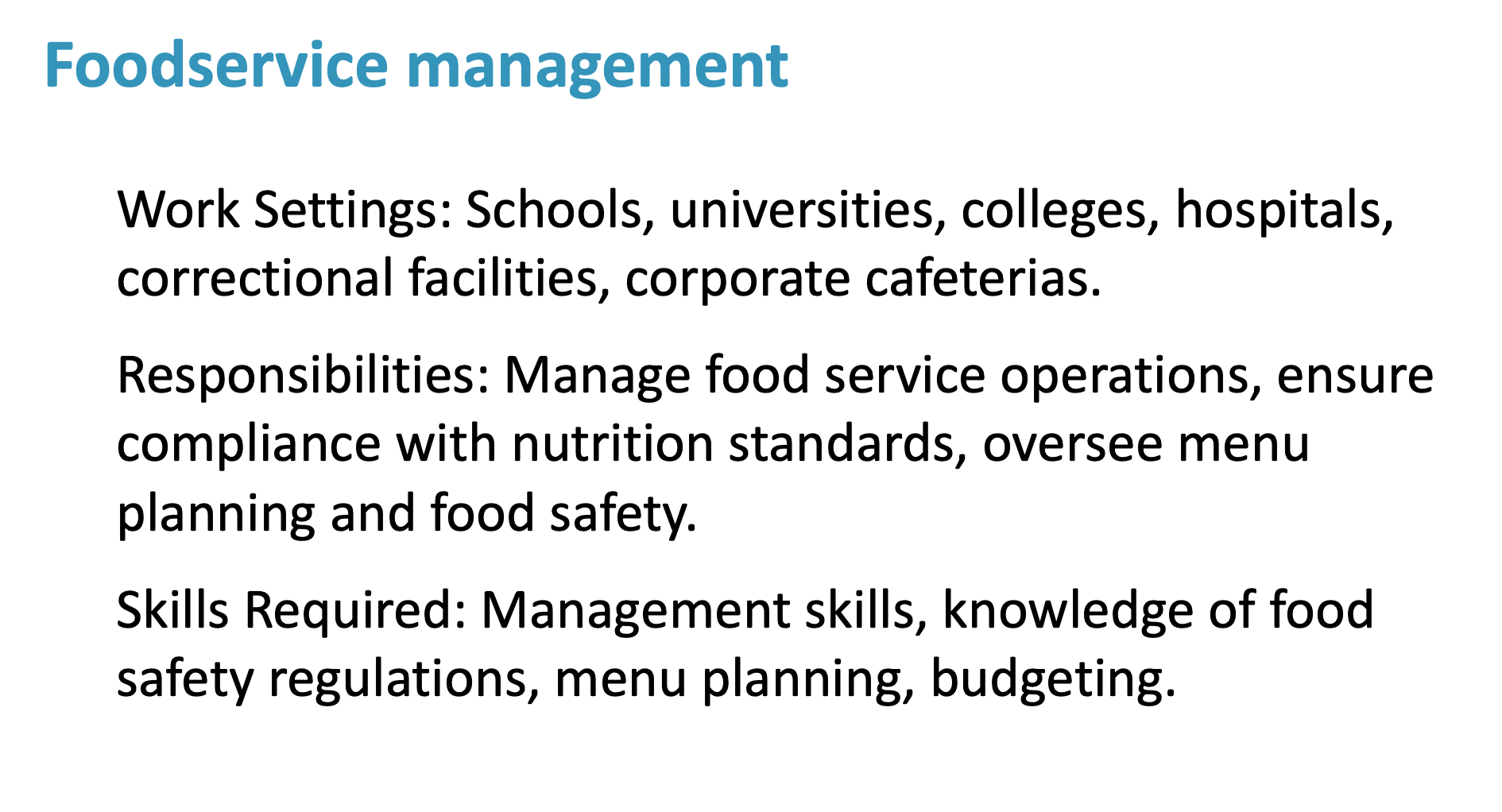
Nutrition informatics specialist
Work Settings:
Responsibilities:
Skills Required:
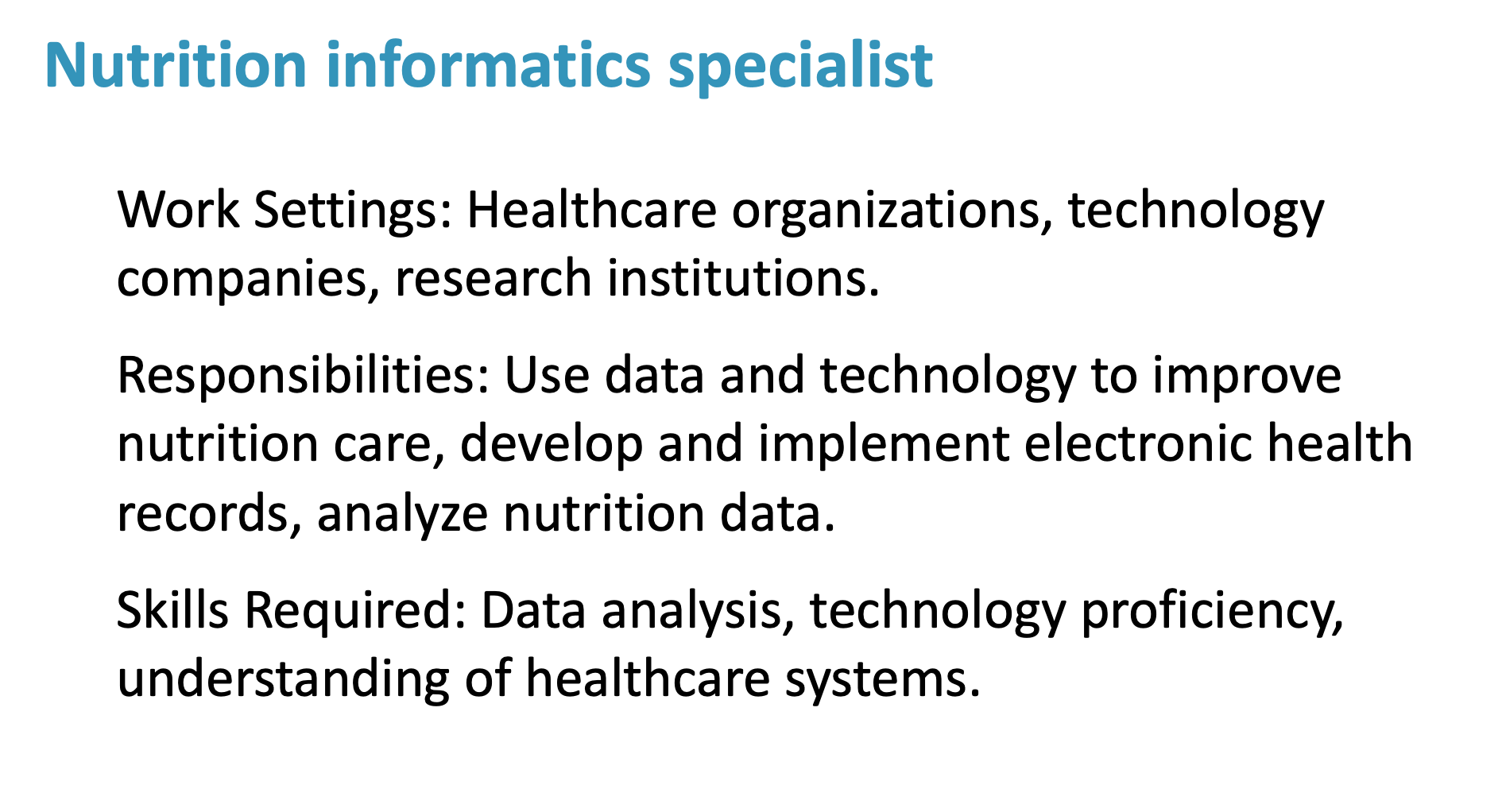
Diabetes educator
Work Settings:
Responsibilities:
Skills Required:
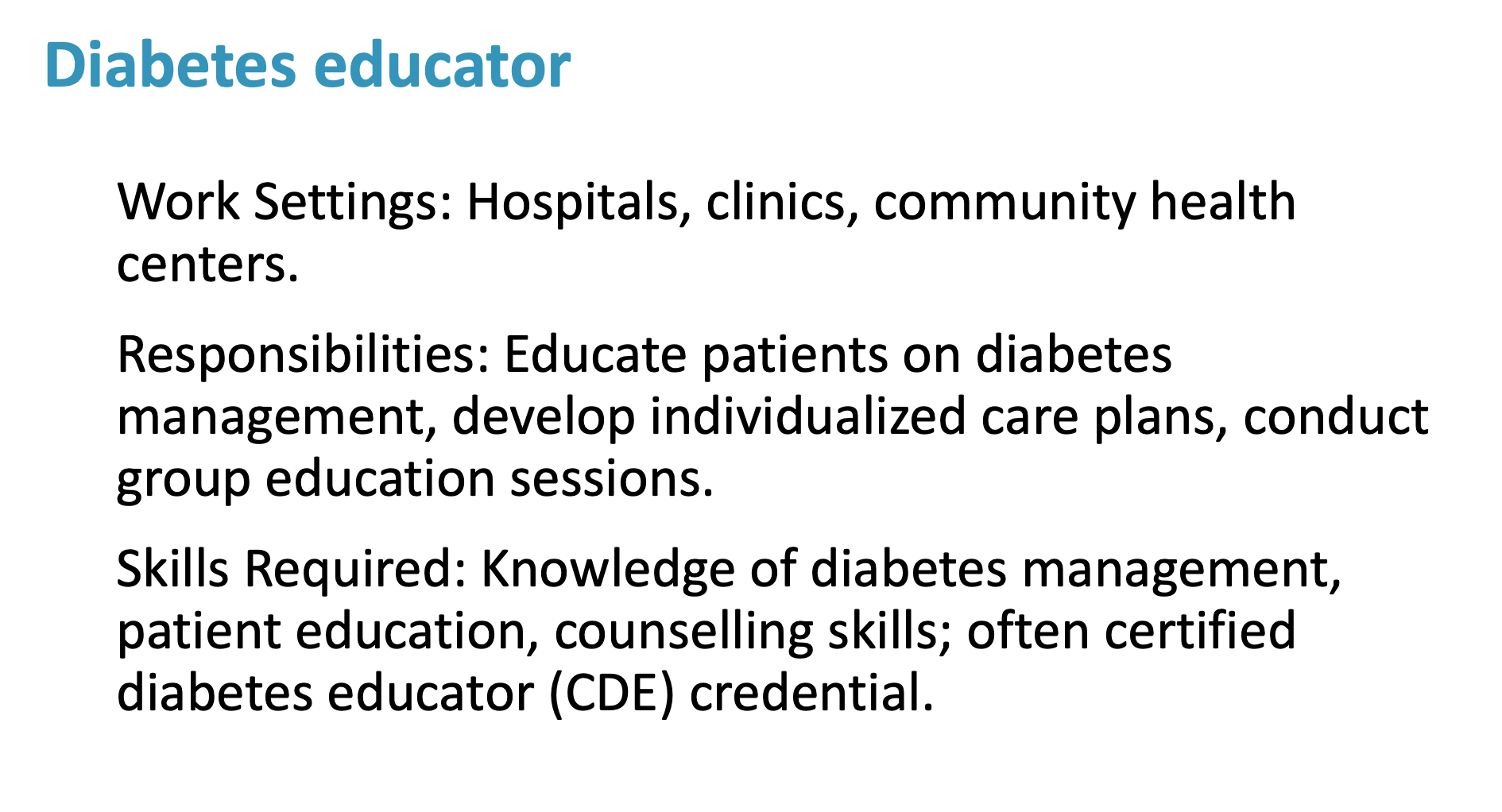
Eating disorder specialist
Work Settings:
Responsibilities:
Skills Required:

Director of nutrition services
Work Settings:
Responsibilities:
Skills Required:
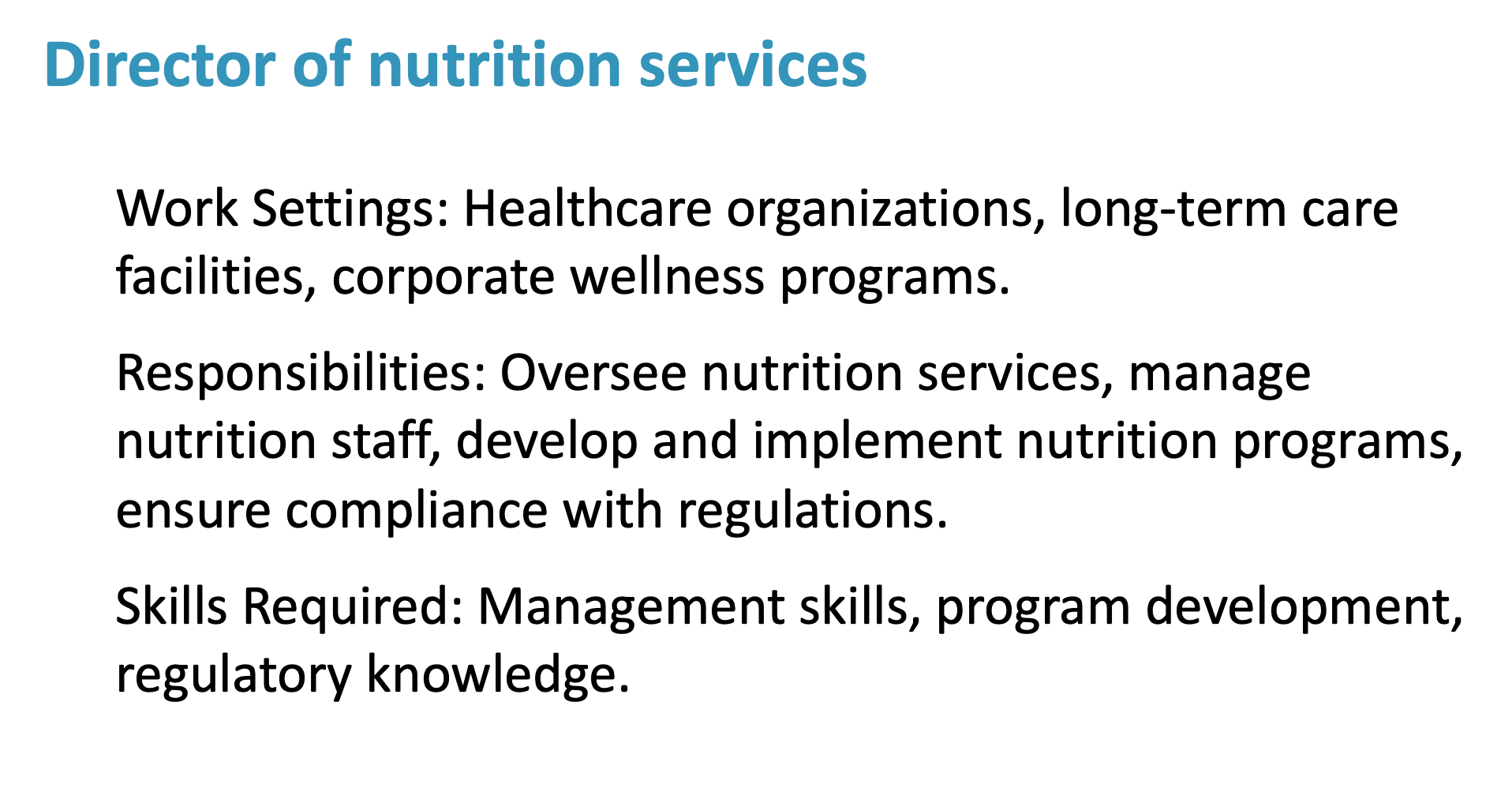
Health and wellness program director
Work Settings:
Responsibilities:
Skills Required:
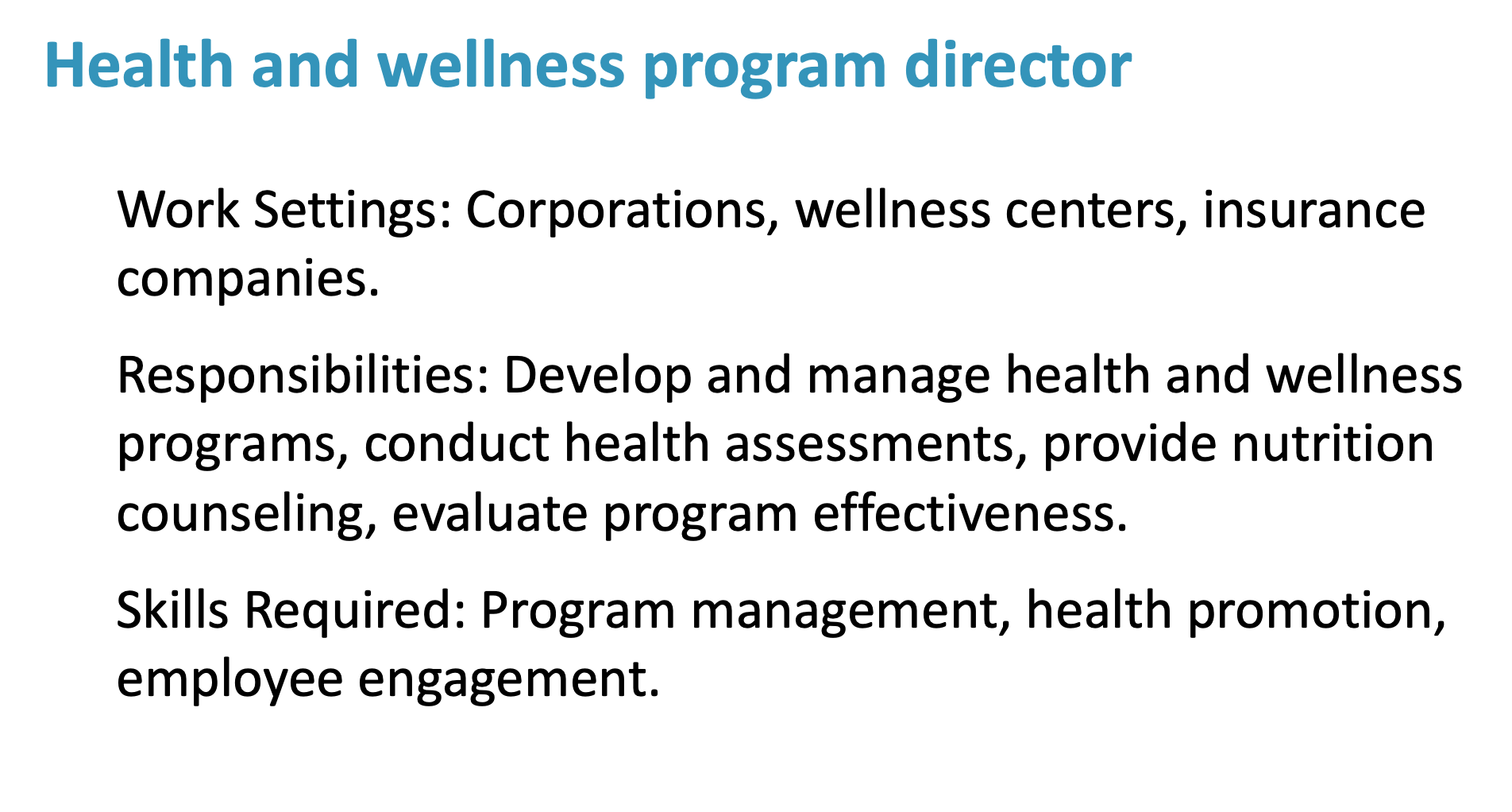
Scientific affairs manager
Work Settings:
Responsibilities:
Skills Required:
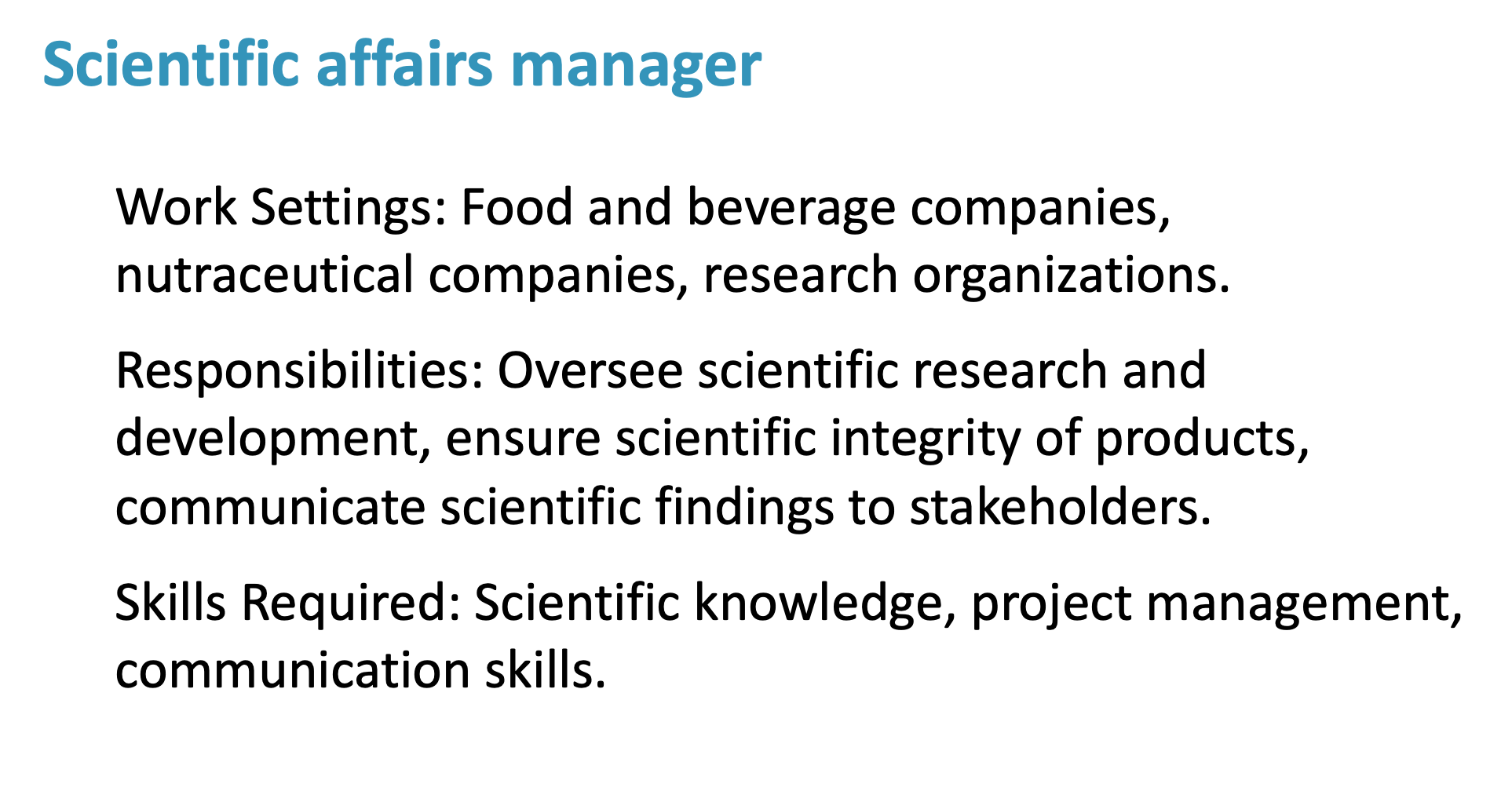
Lecturer/Professor
Work Settings:
Responsibilities:
Skills Required:
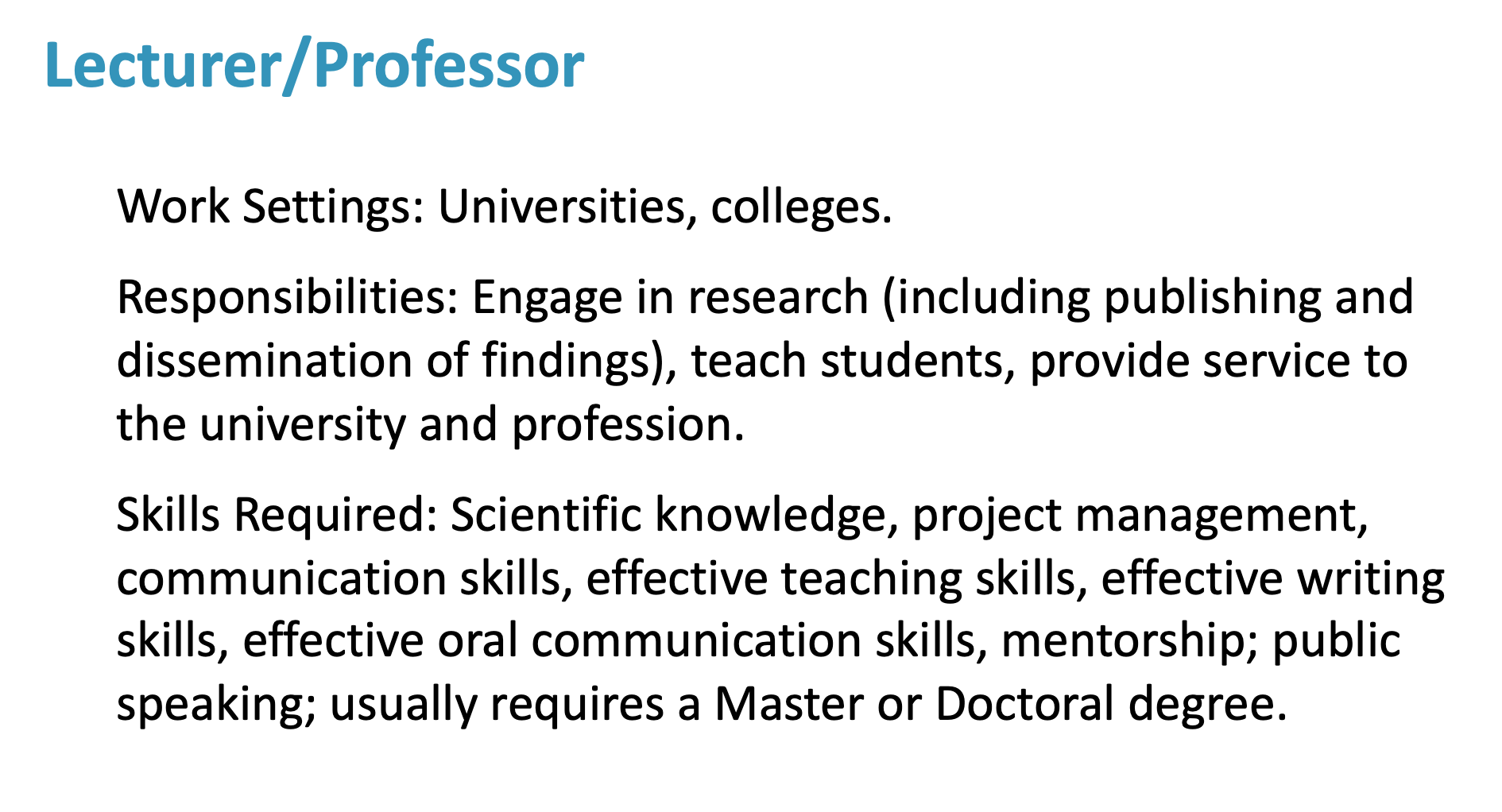
Building a professional network
Networking is a powerful tool for career development. Building a strong professional network can open doors to job opportunities, mentorship, and collaborations. Attend conferences, join professional organizations, and use social media platforms like LinkedIn to connect with other dietitians. Remember, maintaining these relationships is just as important as establishing them."

Continuing education and professional development
The field of dietetics is constantly evolving, and staying current with the latest research and practices is crucial. Lifelong learning through continuing education, certifications, workshops, and conferences will help you stay ahead. Utilize resources like online courses, professional journals, and associations to keep your knowledge and skills up to date."
accreditation body (i.e CDO, SCD) will require you to come up with a learning plan for the year ahead
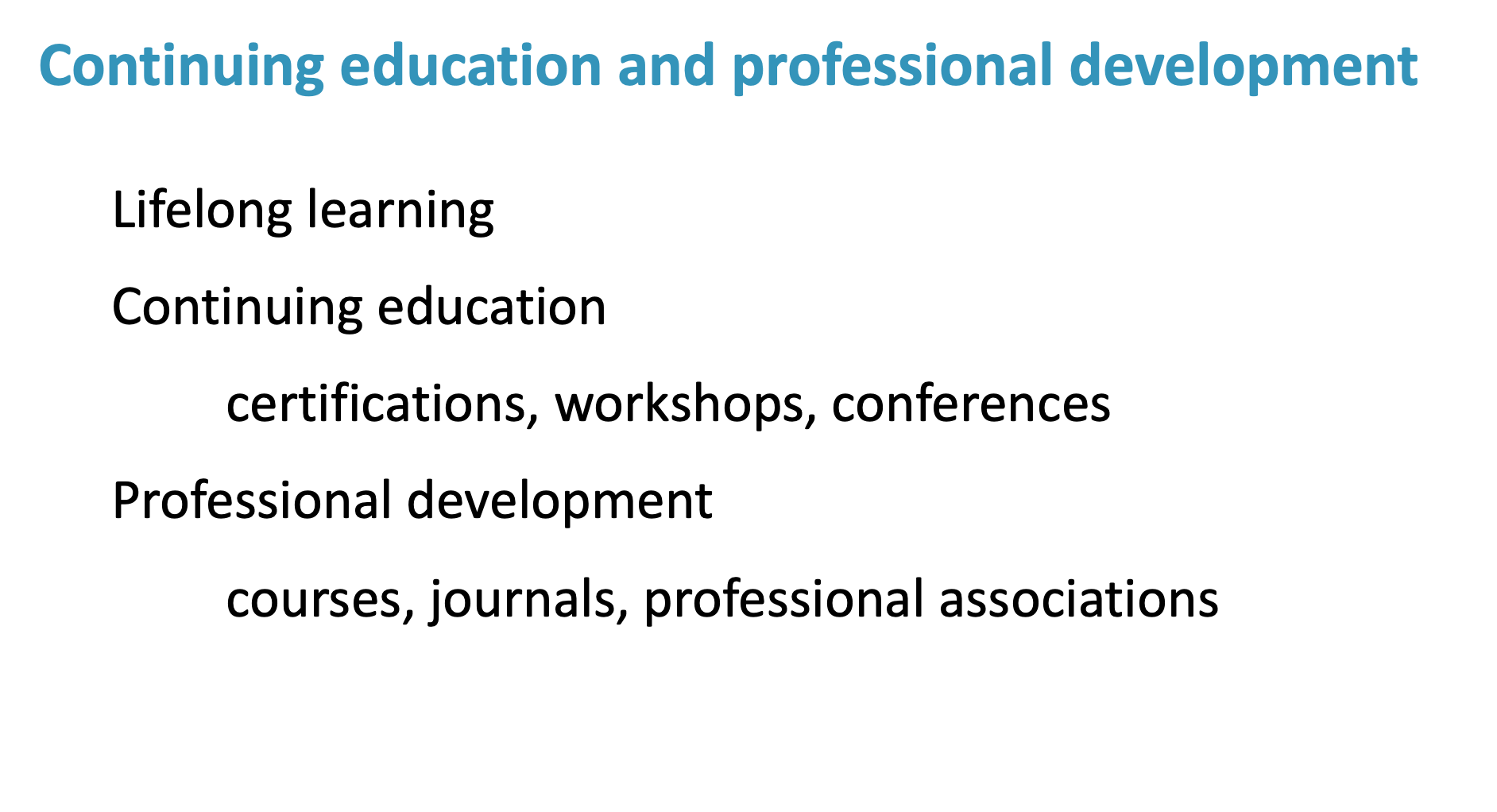
Resumés and cover letters
. Your resume is a snapshot of your professional background, highlighting your education, experience, and skills. On the other hand, your cover letter is a personalized introduction that explains why you are the best fit for the job."
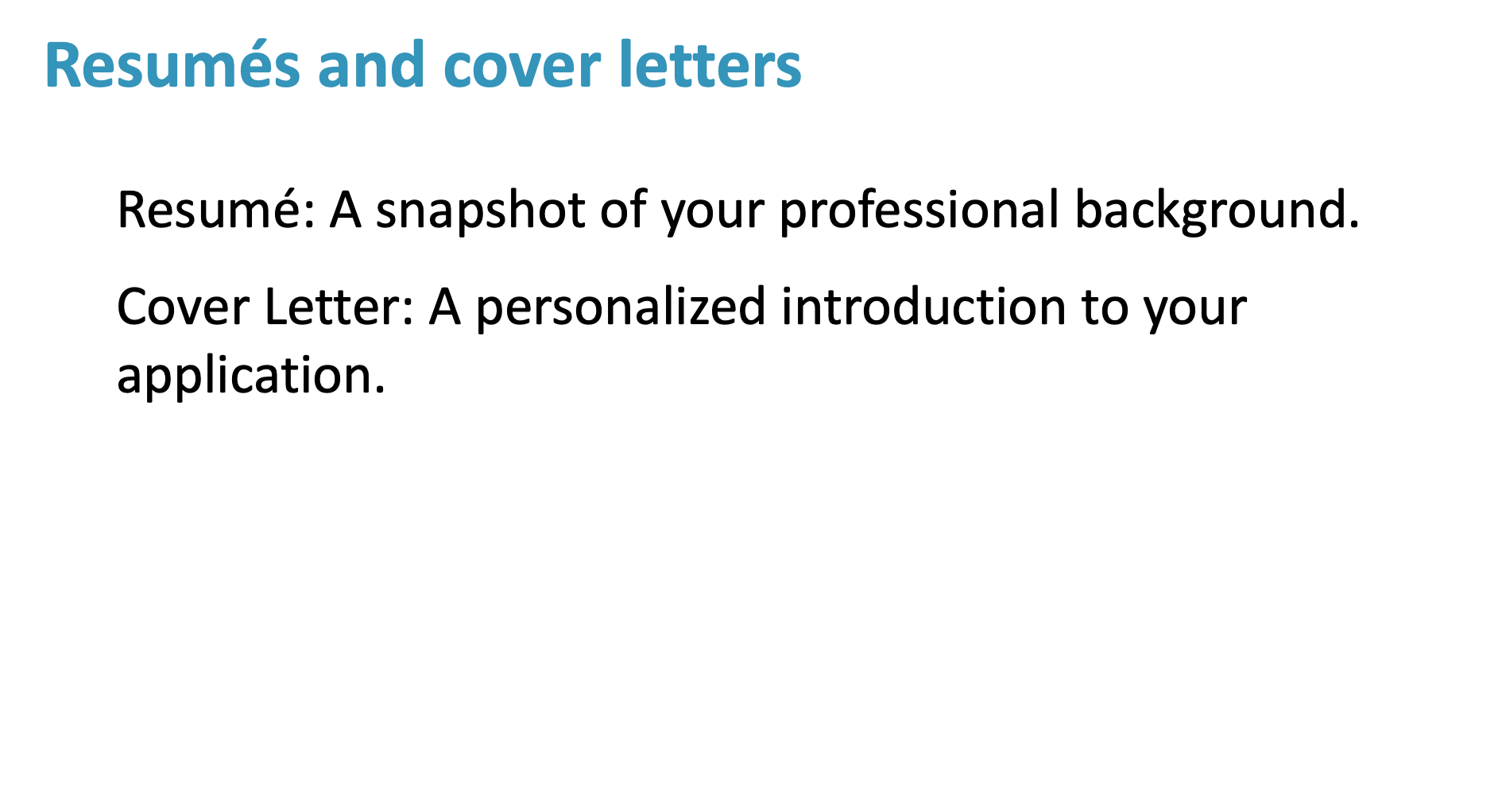
Key components of a resume:
Contact Information
Objective Statement
Education
Experience
Skills
Certifications
References (sometimes)
Objective statements
Be concise and specific.
Align with the job you're applying for.
Highlight career goals and relevance to the employer.
Highlight relevant experience
Focus on relevant roles.
Use bullet points to highlight responsibilities and achievements.
Quantify accomplishments when possible.
Tailoring
Highlight relevant experiences (e.g., dietetic internships, clinical rotations).
Use action verbs and quantify achievements.
Customize for each job application.
Mistakes to avoid
Typos and grammatical errors.
Including irrelevant information.
Using a generic resume for all applications.
Cover letters
parts
Header
Salutation
Introduction
Body
Conclusion
Signature
Effective cover letters
Address the person hiring by name.
Mention how you found the job posting.
Highlight your most relevant experiences and skills.
Explain why you are a good fit for the position.
Skills and certifications
Technical skills (e.g., nutritional assessment, counseling).
Soft skills (e.g., communication, teamwork).
Relevant certifications (e.g., Certified Diabetes Educator).
Job search strategies
Networking
Online Job Boards
Professional Associations
Career Fairs
Networking
Attend industry events.
Join professional organizations.
Connect with peers and mentors.
Follow up and maintain relationships.
Online job boards
Dietitians of Canada Job Board
Canadian Nutrition Society Job Board
Indeed
Interview preparation
Common Interview Questions
Behavioral Questions (STAR Method)
Body Language
Follow-Up Etiquette
Common interview questions
Tell me about yourself.
Why do you want to work here?
Describe a challenging situation you faced and how you handled it.
Behavioural interview questions

Body language
Maintain eye contact.
Offer a firm handshake.
Sit up straight.
Avoid fidgeting.